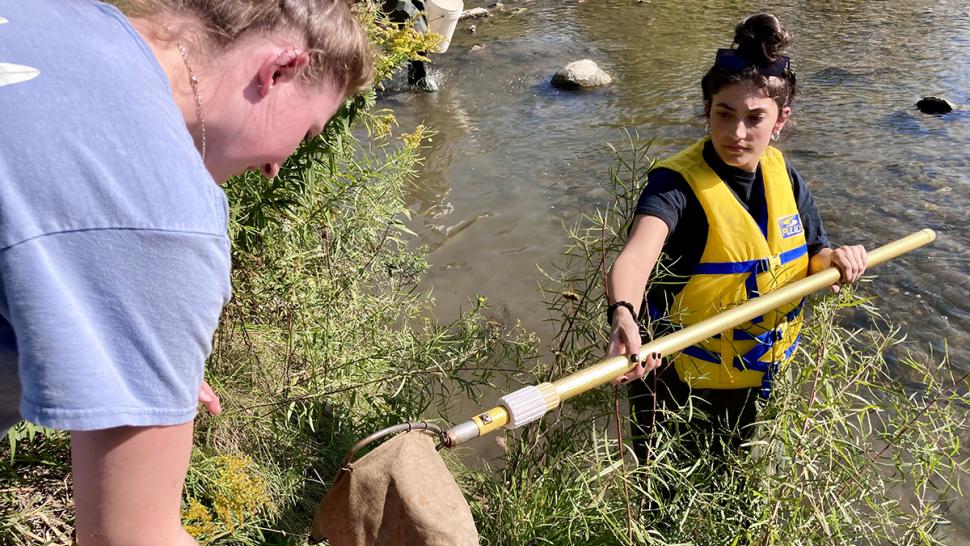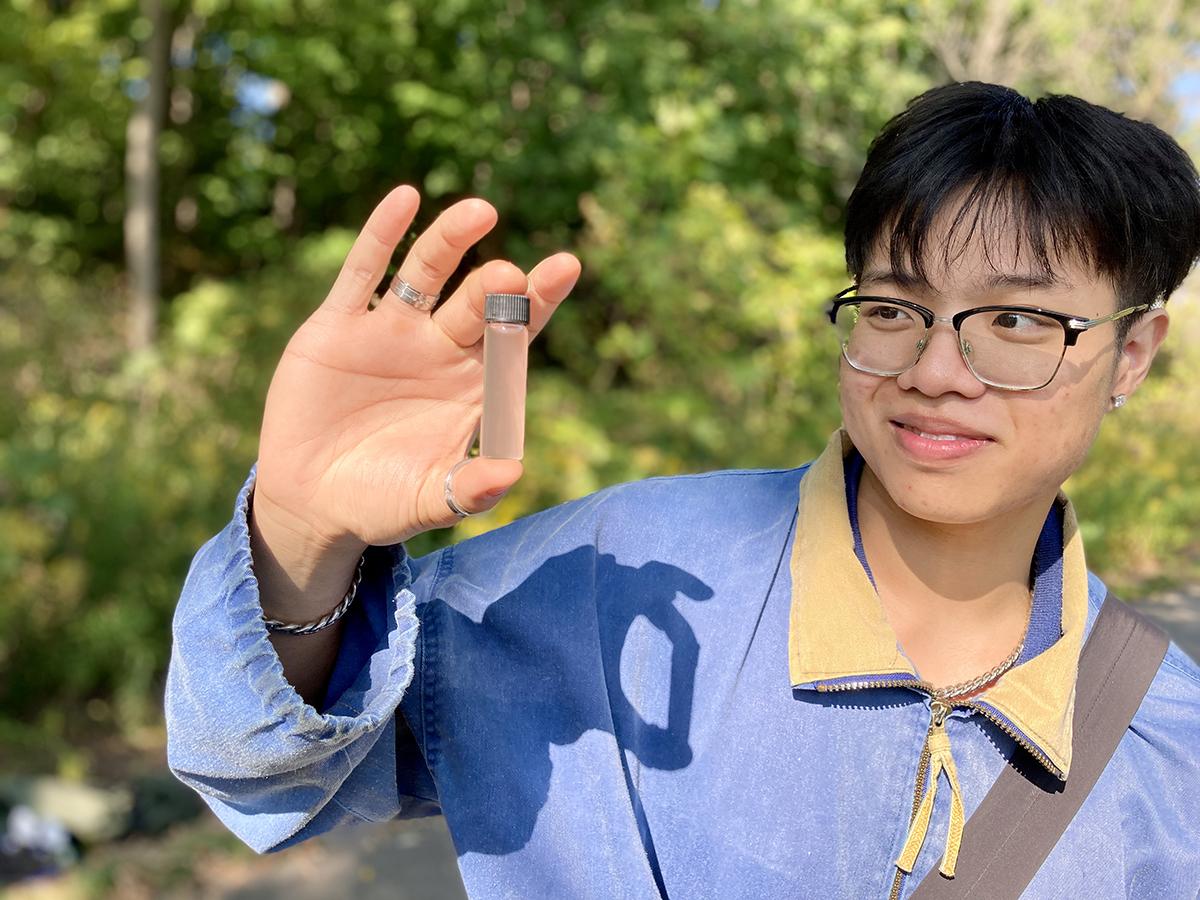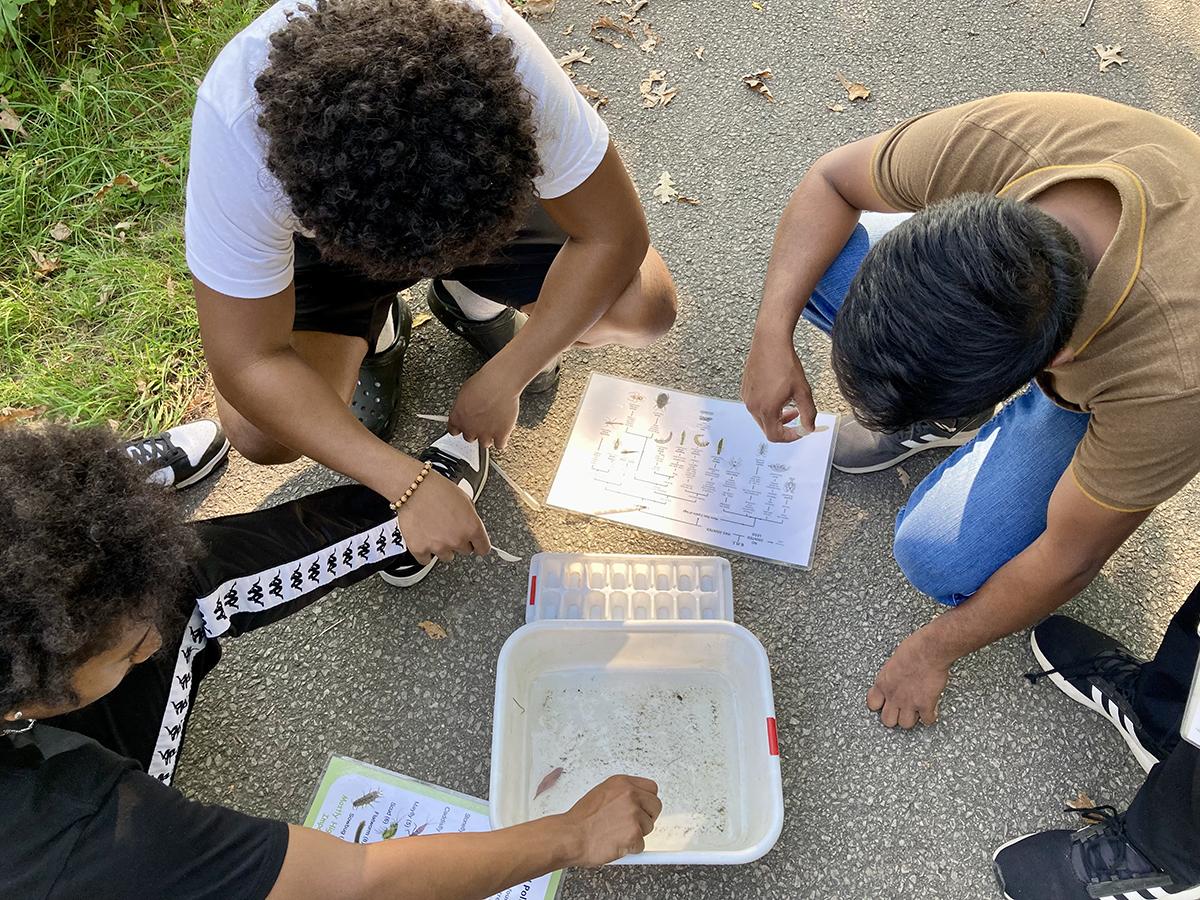
Humber Polytechnic students are gaining hands-on experience in sustainability by getting their hands dirty, so to speak, monitoring the health of the Humber River.
Stephen Stockton and Jen Ball, professors with the Faculty of Liberal Arts & Sciences, are taking their learners into the river to monitor its chemical, physical, and biological health. Innovative Learning, the Office of Sustainability, and the Humber Arboretum partnered to purchase the needed equipment – including hip waders, lifejackets, nets, buckets, organism samples for comparison, and other tools – and students are benefiting. Humber faculty have also completed the necessary Ontario Benthos Biomonitoring Network (OBBN) training to be able to get into the river and collect data effectively.
Monitoring the river is something the Arboretum team, along with Stockton, Ball and their students, have already been doing, with more than 100 students have already participated.

Stockton and Ball said the best way to determine the health of the river is by seeing which groups of invertebrates – such as snails, crayfish, dragonfly nymphs, black flies, mosquitoes and others – reside in the river. There are 27 groups they’re looking for with a healthy diversity being about a dozen or more of them.
Both professors have incorporated the monitoring into their curriculum – Ball in GGRN 100 (Foundations of Sustainability) and Stockton in SCIE 209 (Water: A Life or Death Issue).
“It’s a tremendous educational opportunity as it sheds light on the course – what we’re doing and why we’re doing it,” said Stockton. “This experiential learning is happening in the water and we’re teaching an important way to monitor the health of the Humber River.”
Ball added it gives her students the chance to try something different and expose them to the possibility of taking their career down a sustainability pathway.
“There are so many ways to work in sustainability – there’s clean energy, water management, policy, advocacy and other areas as well. I’ve introduced my students to all of those but we also invite them to explore ecology-type professions,” said Ball. “At the end of the experience, I ask them what they thought and if they had fun and would it be something they might consider doing with their career? And, if it is, I show them where they can go next with their education to get there.”
While monitoring the biological indicators is important, so is looking at the chemical and physical aspects as well. Together, they help provide a fulsome picture of what’s happening in the river.

Meanwhile, the data that’s collected by Humber can now be submitted to OBBN thanks to the new equipment and training.
“It would be great to use this data to be able to pinpoint ideas for stream restoration and also to see how what we’re doing on campus is affecting the water quality,” said Stockton.
“We bear a responsibility to care for this river that passes us by,” added Ball.
They’ve already conducted monitoring in September of last year as well as April and June of this year. The results show the river is in fair condition.
Stockton did note the oxygen levels might be a little lower than what they’d like to see and that sediment in the river is evidence of streambank erosion. He added there’s large fluctuation in water volume and that’s indicative of a hardened watershed.
Ball added that they’ve created a website where users can explore the results of their data collection, which began in 2023. Those interested can visit the Life in the Humber River website.